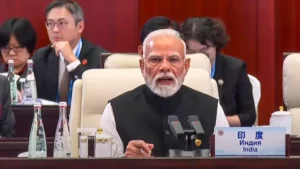Afghanistan will be included in the BRI corridor by China and Pakistan.
Afghanistan will be included in the China-Pakistan Economic Corridor’s expansion. China and Pakistan reached a consensus on this on Saturday. The nations want to assist Afghanistan in rebuilding its infrastructure, which has suffered financially as a result of the Taliban’s rule.
Together, Pakistani Foreign Minister Bilawal Bhutto Zardari and Chinese Foreign Minister Qin Gang will strive to rebuild Afghanistan. This commitment includes more than just the expansion of the China-Pakistan Economic Corridor (CPEC). Additionally, it will provide financial and humanitarian support.
Pakistan-China Economic Corridor
The 60 billion dollar China-Pakistan Economic Corridor project comprises highways and railways that link the western part of China with the southern Pakistani ports of Gwadar and Karachi. The primary goal of investments in Pakistan is to update the country’s current infrastructure.
Which route the CPEC will use to reach Afghanistan is unclear. New infrastructure development is expensive and hence improbable. Modernizing the existing railway lines that connect Pakistan and Afghanistan is more probable. Afghanistan is now formally included in the corridor, making project funding allocated for this use accessible.
Afghanistan’s current railway connections
On a number of other road plans, Afghanistan is already connected to China and Pakistan. The Trans-Afghan corridor map is an example of one such route. A direct and effective link between Uzbekistan and Pakistan through Afghanistan will be made possible by this unfinished route. The whole route, which would cover 573 kilometers, will begin in Termez, southern Uzbekistan, pass through Mazar-e-Sharif, Afghanistan, and terminate in Peshawar, Pakistan’s northeast. The project has, however, been plagued by uncertainty, which has only grown since the Taliban seized control in Afghanistan.
A more practical alternative to this proposal is the China-Kyrgystan-Uzbekistan-Afghanistan corridor. Although it is not a full train ride, the first experiment on this line was conducted in September of last year. Containers are transported by truck from Kashgar, China, to Osh, Kyrgyzstan. They are then placed onto a train and driven through the nations of Central Asia to their ultimate destination, Hairatan in Afghanistan.
Taliban in Afghanistan
Foreign investments have essentially halted since the Taliban took over. Sanctions are in place, and Afghanistan’s financial assets abroad have been blocked. As a consequence, there aren’t enough resources available to finish major infrastructure projects. The Uzbek administration has pushed EU investors to consider the Trans-Afghan corridor, although interest from this region of the globe is not as great as it might be.
However, China, Pakistan, and Uzbekistan have been more receptive to communication with the new Afghan administration, so it is not surprise that money are most likely to come from these nations. Afghanistan, another transit nation linking Central Asia’s north and south, is likewise more likely to be significant for these neighboring nations. The most recent agreement to include Afghanistan in the CPEC might lead to significant infrastructure improvements that the nation alone is unable to fund, if the governments of China and Pakistan are sincere in their commitment.









